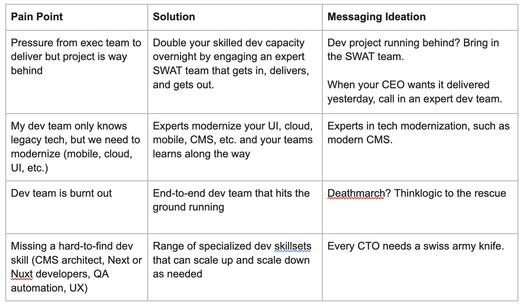|
B2B companies have woken up to the idea of marketing their business by writing content: articles, blog posts, fact sheets, and case studies. But with so much competition, the writing has to be the best in its category in order to stand out above others. How do you ensure what you are about to write is clearer, more interesting, more valuable, and ultimately gets more views than the competition? THE GOLDEN RULES OF CONTENT WRITING 1. Know the audience. What does your audience care most about? What do they already know and what do they want to learn? What style of writing would engage them? For example, if the audience is a Chief Marketing Officer who lives in California, you can guess that they already know about the basics of lead generation and brand building, so don’t risk insulting them by writing an article called “What is lead generation?” Instead, consider writing something more original that a CMO could learn from, such as “10 Ways You Can Use AI To Generate More Leads”. 2. Research what’s already been said on the topic. For example, if you’re writing about web software development, there are already thousands of articles about “how to do web software development”. Instead, pick something more original that the audience cares about. Even the client may not know what topics have already been done to death so you’ll have to provide this context to them. 3. Don’t ever fluff. Whenever you make a statement, back it up with a paragraph and an example. e.g. if you’re saying, “you should include a resume summary in your CV,” you need to follow up by saying why you should do that (“because it helps catch the recruiter’s attention from a single glance at your resume. For example…”). It’s very easy to spot if you’re writing stuff for the sake of writing stuff. Everything you say should have some substance. So test each written sentence/paragraph by asking “So what?”. If it doesn’t bring value, remove it. Basically, the point here is that you shouldn’t stretch for word count. The audience will know. EXAMPLE AUDIENCE: THE CTO Imagine you are a software development agency and the target audience of your content is the Chief Technology Officer (CTO) of an enterprise. The CTO is responsible for building, refreshing and maintaining all the technology in the company. They usually have a team of developers and other technical staff. Other related roles are the CIO, VP Engineering, VP Development, VP Digital, or VP Software Development. First: What are the CTO's Pain Points? Here is an illustration of the pain points of a CTO, and how your software development services help the CTO overcome those pain points. Style of Writing for the CTO
A CTO is usually an engineer by training and therefore is looking for facts and information presented in a concise manner. Therefore, the writing style should be concise and fact-oriented. Consider using bulleted lists and tables, or even attaching downloadable spreadsheets with original research and data. CTOs also have low patience for fluff or information that they consider to be obvious or table stakes. Extra attention should be given to researching what CTOs already know to avoid obvious or table stakes statements. For example, you can guess that they already know a great deal about security of software applications in an enterprise, so don’t risk insulting them by writing an article called “Why is security important for applications in an enterprise?” Instead, consider writing something more original that a CTO could learn from, such as “10 Brand New Ways To Secure a Cloud Application in the Enterprise”. Pitfalls To Avoid
ALWAYS START WITH A CONTENT STRATEGY HEADER To ensure that your audience is clear and the goal of the content piece is clear, always start by outlining what the strategy behind your content piece is going to be:
WRITING STYLE (drawn from Apollo Digital)
SEO GUIDELINES
3 Comments
4/18/2022 07:17:22 am
What an exquisite article! Your post is very helpful right now. Thank you for sharing this informative one.
Reply
Your comment will be posted after it is approved.
Leave a Reply. |

